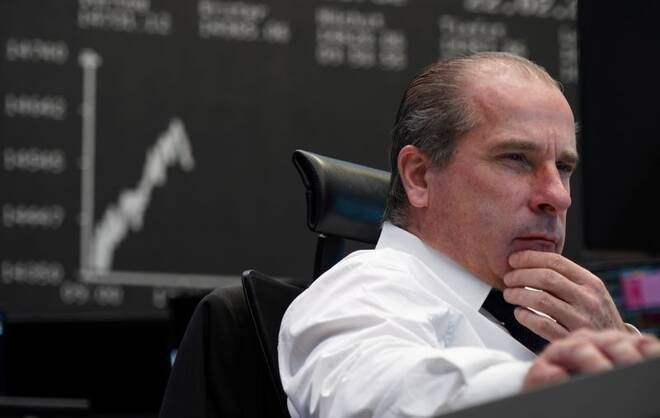Advertisement
Advertisement
Euro zone bond yields leap as ECB lays out rate hiking path
By:
(Reuters) - The euro firmed and money markets moved to price more interest rate rises after the European Central Bank on Thursday signalled a string of interest rate hikes from July and a determination to tame stubbornly high inflation.
By Stefano Rebaudo and Tommy Wilkes
LONDON/MILAN (Reuters) -Bond yields across southern Europe jumped on Thursday after the European Central Bank signalled a string of interest rate hikes starting in July to tame record-high inflation.
European stocks fell on confirmation that the ECB would end its Asset Purchase Programme, its main stimulus tool since the euro zone debt crisis.
Policymakers also flagged a 25 bps move in July and said they may move again in September, possibly by a bigger margin.
Money markets ramped up bets for ECB rate hikes and are now pricing in 145 basis points worth of increases in 2022. The ECB last raised rates in 2011.
Italy’s 10-year bond yield rose as much as 24 bps on the day and hit its highest level since 2018 at 3.715%, while Spanish, Portuguese and Greek yields rose 10-16 bps each.
German 10-year bond yields rose to the highest since July 2014 at 1.47% from around 1.37% earlier and two-year yields were up 7 bps at 0.78%.
In volatile trading, the euro initially rose but later fell sharply as traders struggled to decide whether the ECB was as hawkish as expected and as the dollar enjoyed a broad rebound.
Analysts for the most part saw the statement as the ECB’s attempt to catch up with other major central banks, which are already well along the rate-hike path.
“It is a hawkish pivot, what they are delivering now is not just one or two rate hikes but a clear message that they will have to get rates a lot higher over the coming quarters,” said Marchel Alexandrovich, European economist at Saltmarsh Economics.
“She (ECB President Christine Lagarde) talks about gradualism but in reality there is not a lot in here that backs it up – the forecasts speak for themselves and that suggests a series of rate hikes,” he added.
Others predicted the ECB would be unable to move aggressively given the headwinds facing economic growth and the fallout from the war in Ukraine.
Anna Stupnytska, global economist at Fidelity International, predicted the ECB would struggle to raise rates back into positive territory quickly, predicting “the tightening path will be less steep and shorter than what is currently implied by market pricing”.
That is partly because of risks to weaker euro zone states, in particular Italy and Greece, from a rapid rise in borrowing costs.
Italian yields were set for their biggest one-day rise since late March, pushing the gap over German Bund yields to almost 227 bps – its widest in nearly a week.
Greek 10-year yields rose to 4.15%, the highest since 2020. The Spanish 10-year yield climbed 14 bps to 2.628%, its highest since 2014.
The euro STOXX index weakened 1.48%. Euro zone banks dropped 1.54%.
The euro was last trading down 0.6% versus the dollar at $1.0649 and 0.5% lower against sterling.
(Additional reporting by the London Markets TeamEditing by Dhara Ranasinghe, Anil D’Silva and Catherine Evans)
About the Author
Reuterscontributor
Reuters, the news and media division of Thomson Reuters, is the world’s largest international multimedia news provider reaching more than one billion people every day. Reuters provides trusted business, financial, national, and international news to professionals via Thomson Reuters desktops, the world's media organizations, and directly to consumers at Reuters.com and via Reuters TV. Learn more about Thomson Reuters products:
Did you find this article useful?
Latest news and analysis
Advertisement
